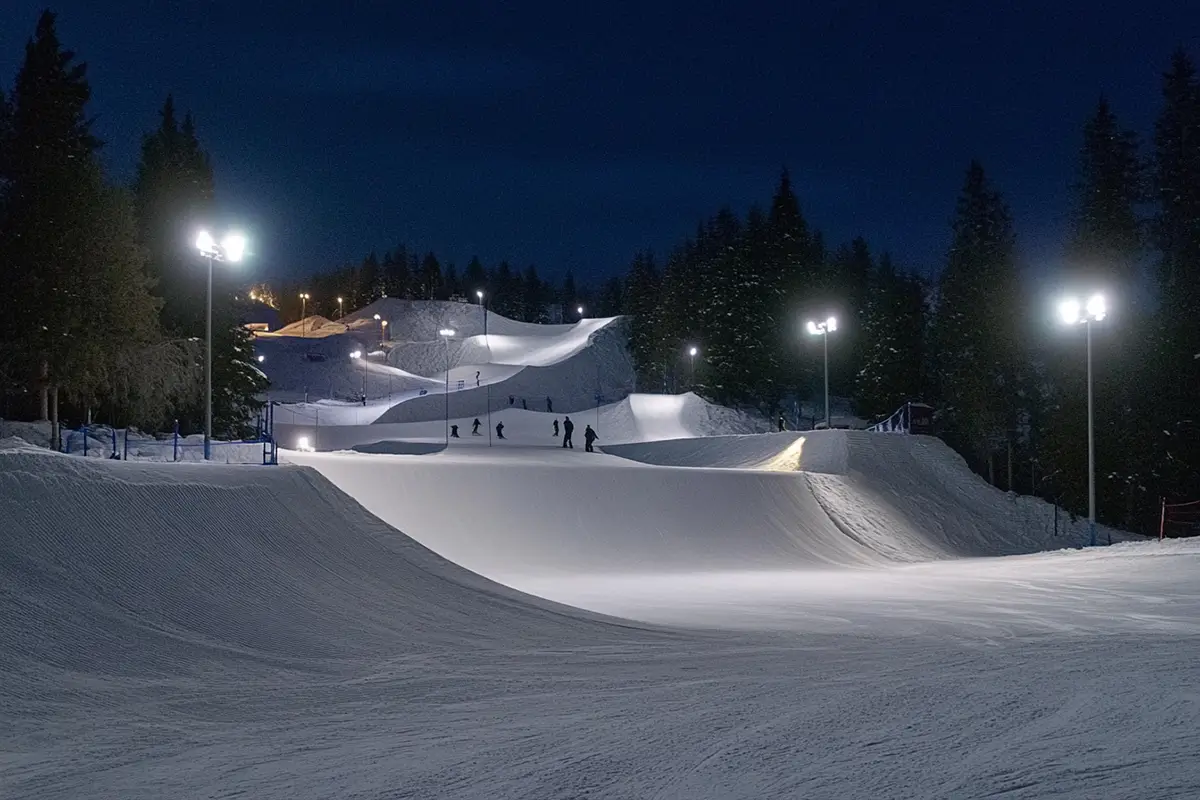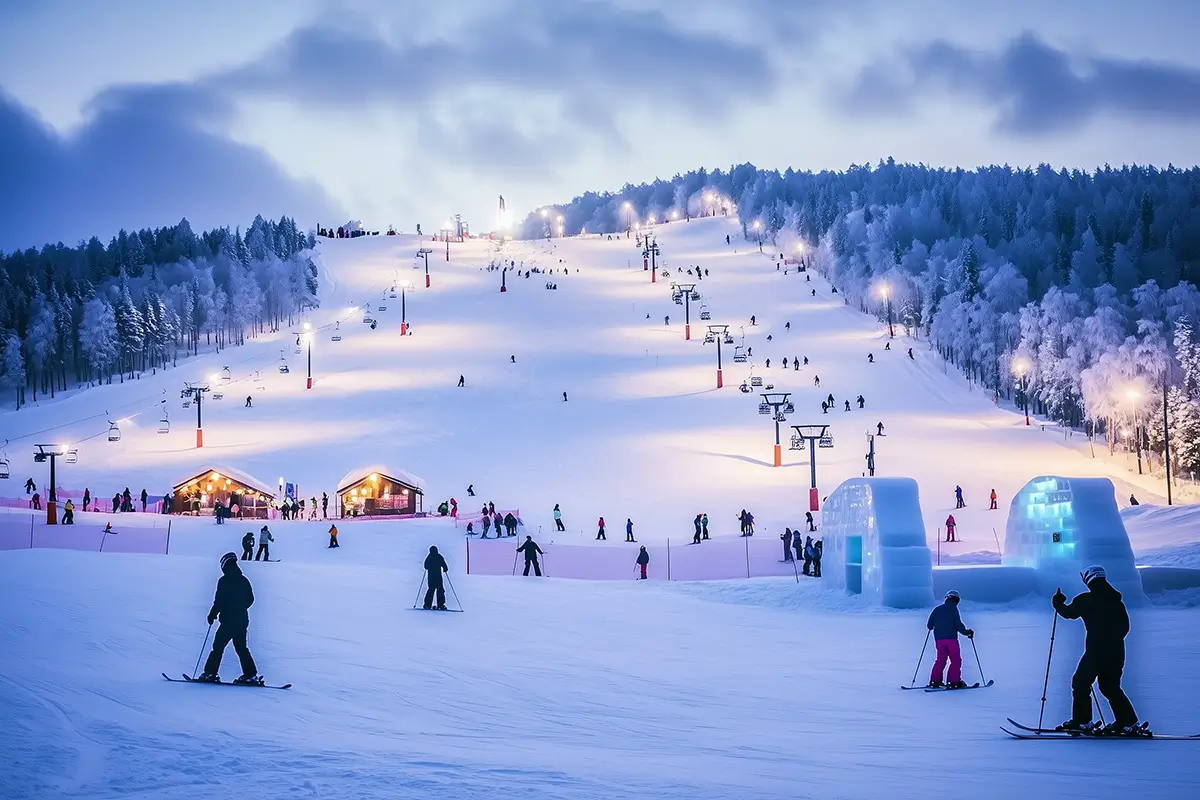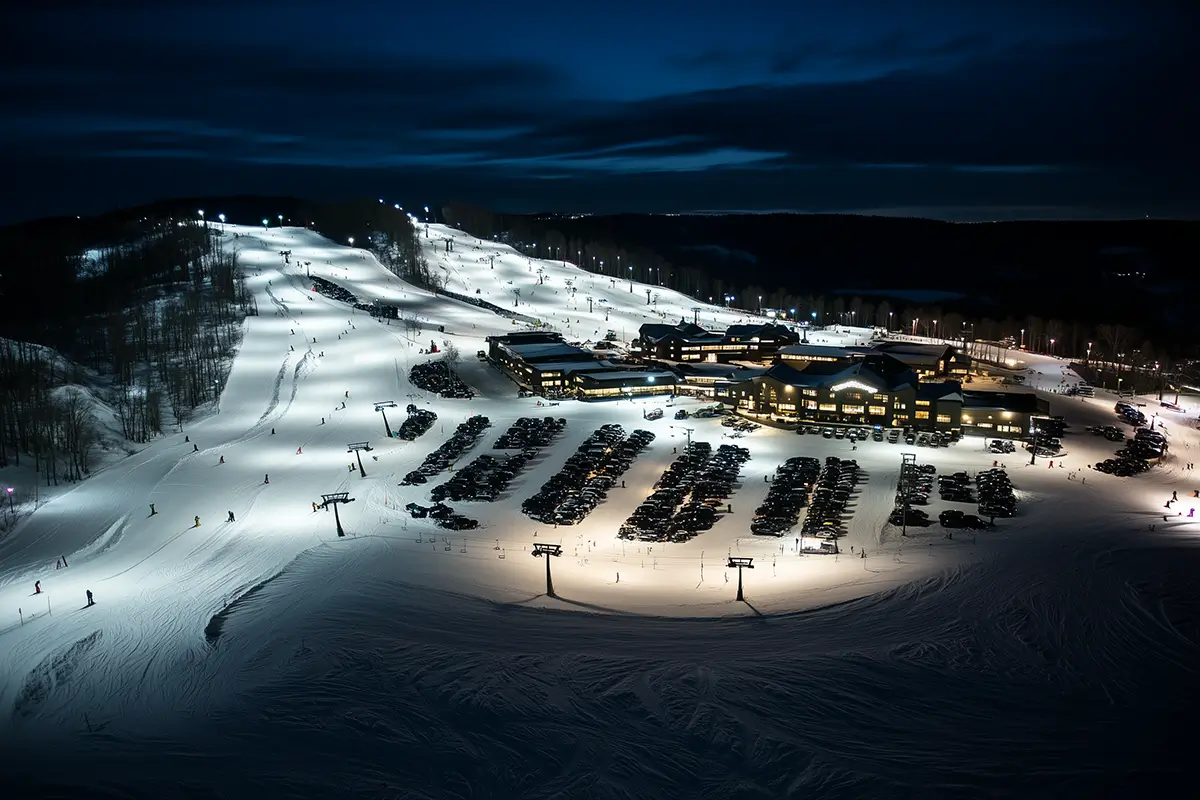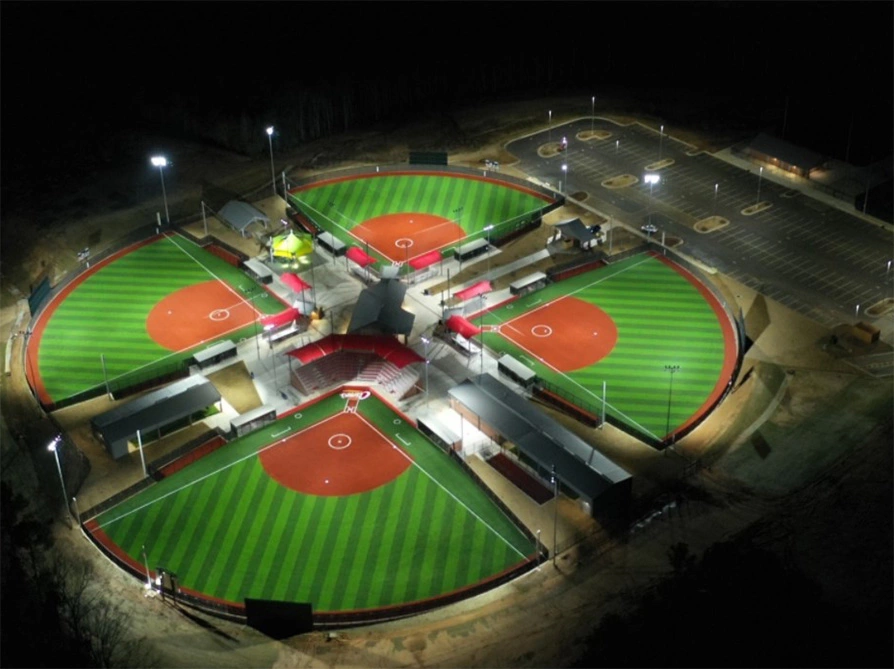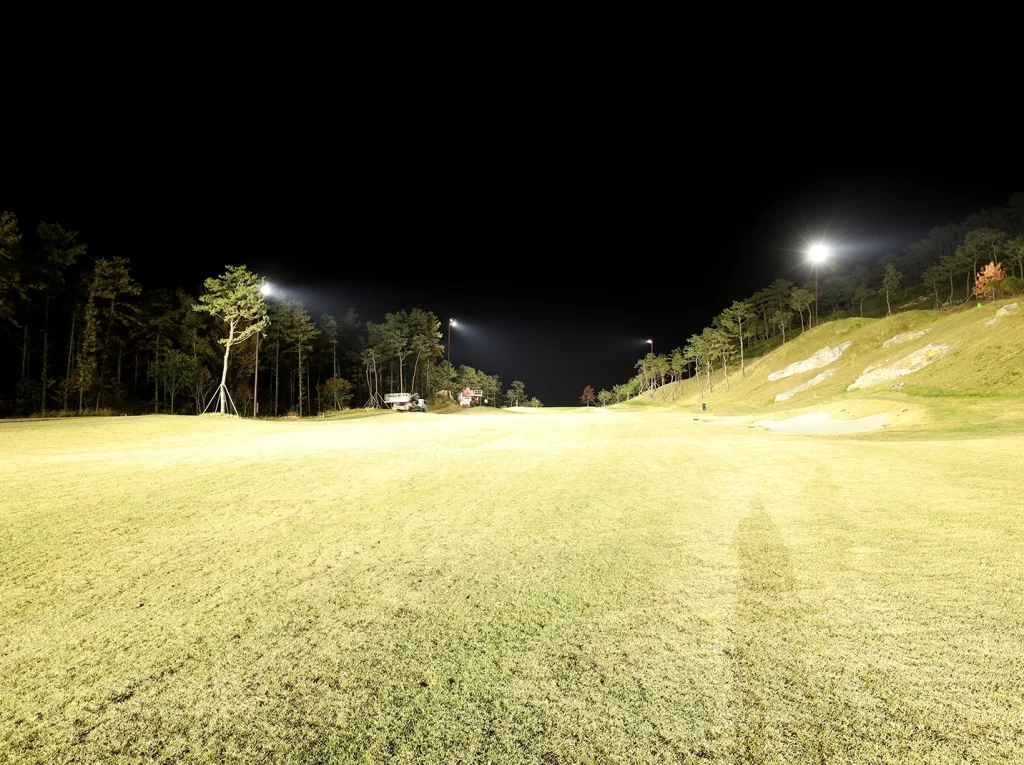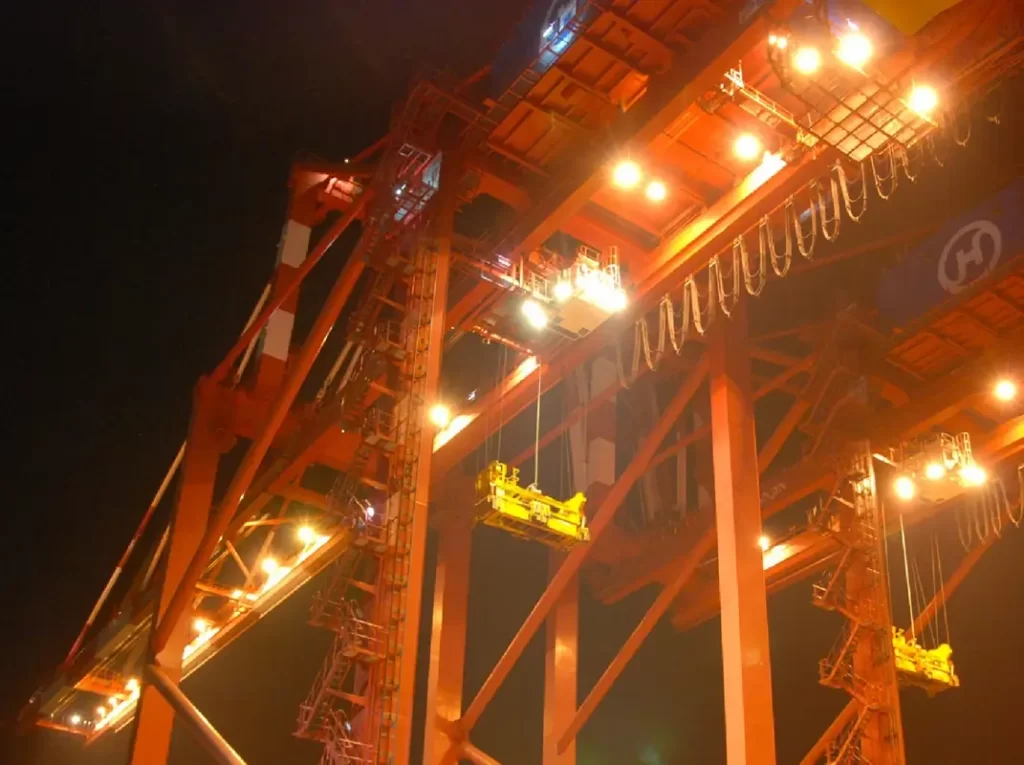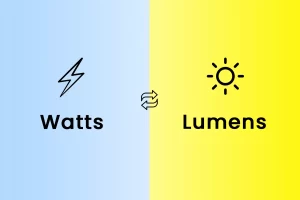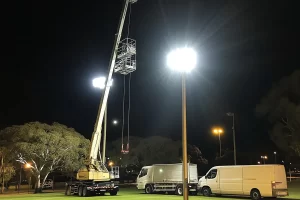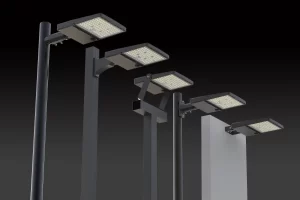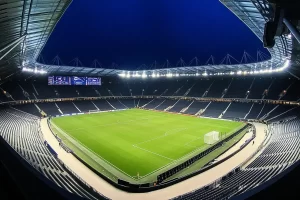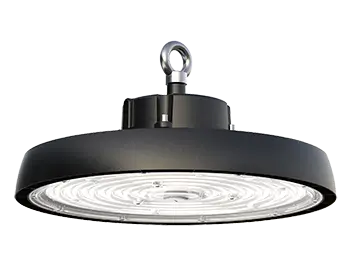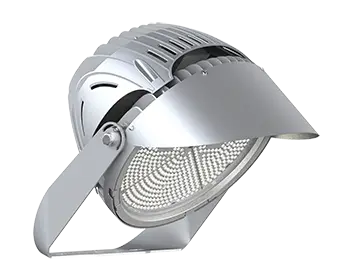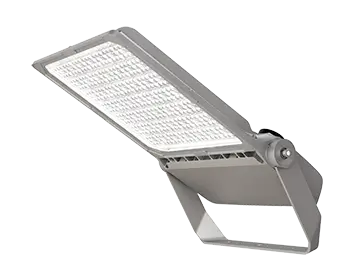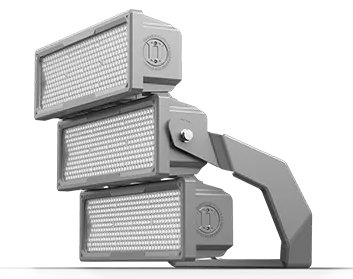Ski resorts have long been a haven for those seeking outdoor adventure in breathtaking natural landscapes. However, the environmental impact of maintaining these winter playgrounds is significant. From the extensive energy demands of snow-making machines to the lighting required for nighttime activities, resorts are looking for ways to minimize their carbon footprint. Sustainable lighting has emerged as a critical solution for creating eco-friendly ski resorts, with LED flood lights, LED sports lights, and thoughtful design leading the way.
Why Ski Resorts Need Sustainable Lighting
The energy consumption at ski resorts is immense, particularly in colder months when shorter days require artificial lighting for longer periods. Traditional lighting methods, such as high-intensity discharge (HID) lights or halogen lamps, consume vast amounts of electricity and often have shorter lifespans, leading to frequent replacements and high operational costs.
Sustainable lighting solutions, especially the use of LED flood lights and LED sports lights, offer significant benefits by reducing energy consumption and lowering carbon emissions. Ski resorts can enhance both environmental sustainability and operational efficiency by investing in energy-efficient lighting technologies, all while creating a safer and more enjoyable experience for visitors.
LED Flood Lights for Energy-Efficient Ski Slope Illumination
One of the most critical areas for ski resort lighting is on the slopes themselves. Ensuring proper visibility for night skiing is essential for both safety and guest satisfaction. LED flood lights have become a top choice for ski resorts, as they offer bright, uniform illumination with a fraction of the energy consumption compared to traditional lighting systems.
LED flood lights are perfect for lighting up large areas such as ski slopes. They provide powerful illumination with a wide beam spread, ensuring that every corner of the slope is well-lit. Additionally, these lights are designed to operate in extreme cold conditions, making them a reliable option in winter climates.
The benefits of LED flood lights extend beyond energy efficiency. They also have a longer lifespan, reducing the frequency of replacements and maintenance, which in turn lowers overall costs for the resort. Plus, they emit less heat, making them safer and less prone to overheating in snowy environments.
LED Sports Lights for Versatile and Sustainable Lighting
While ski slope lighting is essential, LED sports lights serve a broader purpose at ski resorts. These lights are used to illuminate event spaces, terrain parks, and outdoor common areas, ensuring that guests can safely enjoy all aspects of the resort. Whether hosting night competitions or lighting up a cozy outdoor dining area, LED sports lights offer the flexibility and durability that ski resorts need.
LED sports lights are designed for high-performance lighting and can be customized with smart controls. These controls allow resort operators to adjust light levels based on real-time conditions, such as weather or event requirements. This capability not only saves energy but also enhances the guest experience by providing optimal lighting at all times.
Designing Aesthetic Lighting for Ski Resorts
While functionality is key, designing aesthetic lighting is also a critical element for creating an inviting and memorable resort atmosphere. Whether in the ski village, lodges, or restaurants, lighting should enhance the beauty of the resort while maintaining energy efficiency.
For example, low-energy LED fixtures can be used to highlight architectural details or natural elements like trees and snow-covered landscapes. This creates a warm and welcoming environment for guests, especially during the evening hours when they relax and enjoy après-ski activities.
Using smart lighting systems, ski resorts can adjust the brightness and color temperature of lighting to match the ambiance of different areas. For instance, brighter, cooler lights can be used for outdoor areas to improve visibility, while warmer, softer lighting can create a cozy atmosphere inside lodges and restaurants.
The Environmental and Economic Benefits of Sustainable Lighting
Ski resorts that adopt sustainable lighting solutions will enjoy a wide range of benefits:
Reduced Energy Consumption: LED lighting uses up to 75% less energy than traditional lighting, resulting in significant cost savings over time.
Lower Carbon Footprint: By reducing energy use, ski resorts can decrease their carbon emissions, contributing to a more sustainable operation and minimizing their impact on the surrounding environment.
Longer Lifespan: LED lights have a much longer lifespan than traditional lighting options, leading to fewer replacements and reduced waste.
Improved Safety: High-quality lighting on ski slopes and in public areas reduces the risk of accidents, ensuring a safer experience for both skiers and staff.
Reduced Maintenance Costs: Fewer replacements and less frequent maintenance due to the durability of LED lighting result in lower long-term costs for resorts.
Enhanced Guest Experience: Thoughtfully designed lighting creates a welcoming and visually appealing atmosphere, which improves the overall guest experience and can attract more eco-conscious visitors.
A Bright Future for Sustainable Ski Resort Lighting
As the demand for eco-friendly tourism continues to rise, ski resorts have a unique opportunity to lead the way in sustainable practices. Adopting sustainable ski resort lighting not only helps reduce energy costs and environmental impact but also enhances the overall experience for guests. LED flood lights, LED sports lights, and aesthetic lighting designs can work together to create a functional, beautiful, and sustainable resort environment.
By investing in these technologies, ski resorts can ensure that their operations are more energy-efficient while still delivering the top-tier experience that guests expect. Sustainable lighting solutions represent the future of eco-friendly ski resorts, making the mountains a little greener—one light at a time.


